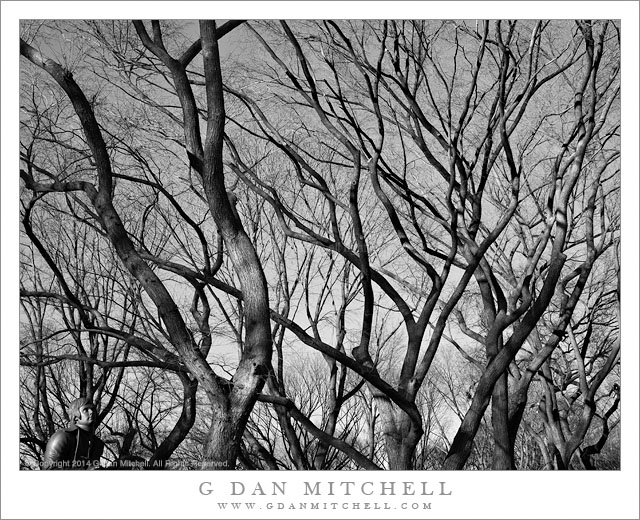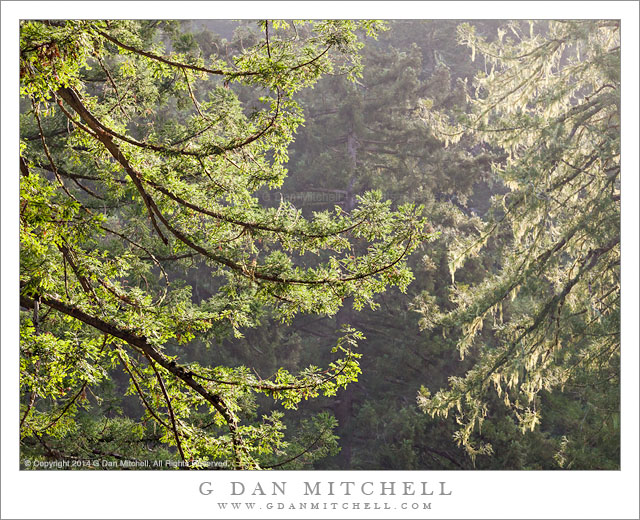
Winter Trees, Statue, Central Park. New York City. December 28, 2013. © Copyright 2014 G Dan Mitchell – all rights reserved.
Barren winter trees and statue in Central Park, New York City
At the end of 2013 we spent a week in New York City, devoting our time to a combination of family visits and exploring the city and surroundings. We staying in Manhattan and did a lot of walking and subway riding there, but we also got up to the north as far as The Cloisters museum and also spent quite a bit of time in Brooklyn.
We managed to miss the worst of the tough winter weather in New York. We had some rain on one day, and there was the tiniest flurry of snow on another near the end of the trip. For Californians from the San Francisco Bay Area, it seemed cold, but not nearly like it would be starting a few days after we left, when cold conditions and very heavy snow arrived. All of this was great for us since we wanted to walk and photograph a lot. On one day we decided to wander around in Central Park. It was a beautiful winter day, with mostly blue skies and clear air. The park was crowded with plenty of other people who were taking advantage of the opportunity to get out. As we wandered around I carried my small rangefinder-style camera and mostly shot quickly and spontaneously, focusing on whatever happened to catch my attention—a group of trees, tall building surrounding the park, people, and so on. Here I tried to fill the frame with the stark, twisted forms of these barren winter trees against the clear sky… with a small surprise in the lower left corner.
 G Dan Mitchell is a California photographer and visual opportunist whose subjects include the Pacific coast, redwood forests, central California oak/grasslands, the Sierra Nevada, California deserts, urban landscapes, night photography, and more.
G Dan Mitchell is a California photographer and visual opportunist whose subjects include the Pacific coast, redwood forests, central California oak/grasslands, the Sierra Nevada, California deserts, urban landscapes, night photography, and more.
Blog | About | Flickr | Twitter | Facebook | Google+ | 500px.com | LinkedIn | Email
Text, photographs, and other media are © Copyright G Dan Mitchell (or others when indicated) and are not in the public domain and may not be used on websites, blogs, or in other media without advance permission from G Dan Mitchell.



